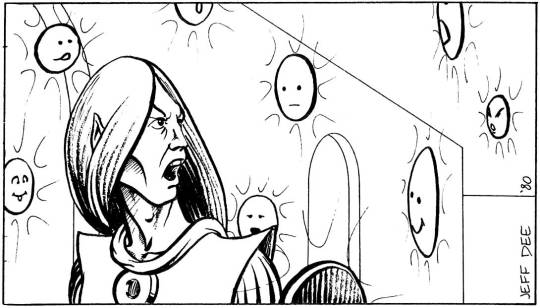#Scope Changes in Project Management
Explore tagged Tumblr posts
Text
How Accurate Is a Construction Cost Estimating Service Today?
Accuracy in construction cost estimating is a critical factor that directly impacts project success. With the rising complexity of modern construction projects and fluctuating market conditions, many stakeholders wonder: just how accurate is a construction cost estimating service today? This article explores the factors affecting estimating accuracy, common challenges, and how today’s technologies and best practices improve estimate reliability.
Factors Influencing Estimating Accuracy
Several elements influence the precision of a construction cost estimate:
Project Scope Definition The level of design detail strongly affects accuracy. Early-stage or conceptual estimates tend to be less precise due to limited drawings or specifications. As project plans mature, estimators can provide more detailed and reliable figures.
Data Quality and Sources Accurate cost estimating depends on up-to-date pricing data for materials, labor, and equipment. Using outdated or regionally irrelevant data can cause discrepancies. Reliable estimating services constantly update their cost databases to reflect current market rates.
Estimator Experience and Methodology Experienced estimators apply proven methodologies, industry standards, and risk assessment techniques. Their expertise in interpreting plans and anticipating challenges leads to better accuracy compared to automated or less experienced approaches.
Complexity and Project Type Simple projects with straightforward design and well-known materials are easier to estimate accurately. Complex projects—such as large commercial buildings or industrial facilities—introduce more variables that increase uncertainty.
Use of Technology Advanced estimating software and Building Information Modeling (BIM) integration help improve accuracy by automating quantity takeoffs and linking design changes directly to cost updates. This reduces manual errors and speeds up estimate revisions.
Common Accuracy Ranges
Accuracy is often expressed as a range or percentage variance from the actual project cost. Typical accuracy levels vary by estimate type and project stage:
Preliminary or conceptual estimates: ±15% to ±30%
Schematic design estimates: ±10% to ±20%
Detailed or bid estimates: ±5% to ±10%
It’s important to understand that no estimate can guarantee 100% accuracy due to unforeseen factors like weather, labor strikes, or supply chain disruptions.
How Estimating Services Improve Accuracy
Regularly updating cost databases: Reflecting current prices reduces pricing errors.
Conducting detailed quantity takeoffs: Precise measurement reduces scope gaps.
Collaborating with subcontractors and suppliers: Incorporating real bids enhances reliability.
Applying risk management contingencies: Buffers prepare budgets for uncertainties.
Leveraging technology: Automated tools reduce manual calculation mistakes.
Why Accuracy Matters
Accurate construction cost estimates contribute to better budget control, more effective bidding, and fewer costly change orders. They provide confidence to owners, contractors, and investors, enabling informed decision-making and smoother project delivery.
FAQs
What causes inaccuracies in construction cost estimates? Inaccuracies often stem from incomplete project information, outdated cost data, unexpected site conditions, and design changes during construction.
Can technology guarantee 100% accurate estimates? No technology can fully eliminate uncertainty, but it significantly improves accuracy by reducing human errors and increasing data integration.
How often should estimates be updated during a project? Estimates should be updated at key project milestones, such as after design revisions or major scope changes, to maintain accuracy.
Conclusion
While no construction cost estimating service can provide perfect accuracy, modern practices and technologies have greatly improved estimate reliability. Understanding the factors that influence accuracy helps stakeholders set realistic expectations and plan contingencies effectively. Ultimately, partnering with a skilled estimating service reduces financial risks and supports successful project outcomes.
#how accurate are construction cost estimates today#factors affecting construction estimating accuracy#technology in construction estimating services#typical accuracy range for construction estimates#how to improve accuracy of construction estimates#impact of project scope on estimate accuracy#role of estimator experience in accuracy#BIM for construction cost estimating#construction estimating errors and solutions#updating cost data for accuracy#risks in construction cost estimating#best practices for construction estimating accuracy#difference between conceptual and detailed estimates#importance of detailed quantity takeoffs#how subcontractor bids improve estimates#construction change orders and estimate accuracy#managing contingencies in construction estimates#estimating accuracy for commercial projects#challenges in industrial construction estimates#impact of design changes on cost estimates#technology tools for estimators#how often to update construction estimates#common causes of estimate inaccuracies#estimating small vs large construction projects#improving bidding accuracy with estimating#cost estimating software benefits#role of experience in construction estimating#how to reduce cost overruns with accurate estimates#using data analytics in construction estimating#what is a reliable construction cost estimate
0 notes
Text
What Is Scope Creep and How Can It Be Managed?
Explore the insidious nature of scope creep in projects and learn effective strategies to manage and prevent it. From understanding its causes to implementing robust project management techniques, discover how to keep your projects on track and within budget. Check out more details here: https://www.taskade.com/blog/what-is-scope-creep
#Scope creep management#Project scope control#Preventing scope creep#Project management strategies#Scope change management#Managing project scope#Project scope expansion#Scope creep prevention tactics#Controlling project scope#Avoiding scope creep in projects
0 notes
Note
why do you think indie metroidvanias specifically take so long to make, and is there a solution that you'd like to see them go for? (i know that would likely mean a compromise of some kind, but like, you know)
The reason why is fairly obvious: the classic metroidvania formula makes it very easy to fall prey to unintentional scope creep and is a positive nightmare to QA.
Non-linear progression gating based on precision platforming challenges where the player's basic moveset is constantly changing means every little thing needs to be rigorously tested in every part of the gameworld, carefully checking every room with every combination of abilities the player could conceivably possess for a wide range of failure states.
Is there some combination of abilities that allows the player to get into this room, but not out of it afterwards? Is there some combination of abilities that allows the player to do things in an order you didn't expect? Does that variation in sequencing in turn create situations where the player can end up somewhere without an ability you had assumed was required to get there? And so forth.
Even once you've got everything tested, it's not over. Every tiny change during development, even as small as adding or subtracting a couple of percentage points from the player character's jumping height or walking speed, can potentially have a domino effect that introduces a whole new set of failure states. It's not a pretty picture!
As for solutions, the one most solo or small-team metroidvanias end up adopting is to put a damper on the exponential QA explosion by linearising progression. If you haven't flipped the right switch or visited the right room, the door simply doesn't open, the progression-critical cutscene simply doesn't trigger, and so forth. Even big-name metroidvanias often make judicious use of this one: for example, Super Metroid has certain doors in the early game that just arbitrarily will not open until you've collected a couple of specific items from the game's combat-free introductory area.
The trouble with this approach is that if you use it to the extent that's necessary to keep your QA responsibilities at a manageable level for a small team or solo developer, you functionally end up with a linear, level-based platformer that makes you walk from one level to the next. Whether this disqualifies a given title from the "metroidvania" label is a demarcation problem I'm not interested in litigating, but folks who expected a more open world experience are quite understandably going to be disappointed.
The approach I'd prefer more indie metroidvanias take is to keep things under control by limiting their scope. Not ever damn thing needs to be the next Hollow Knight; many classics of the genre can be completed in well under an hour with good routing even without employing modern speedrun tech. Similarly, some of the best indie metroidvanias are those with the smallest maps; Alruna and the Necro-Industrialists, probably the best example of open-world map design of any metroidvania published in 2024, has a map that's scarcely twenty by twenty screens, and its routing is downright fiendish.
(One of my perennial probably-never-gonna-happen projects is to design a full-featured metroidvania targeting a two to three hour casual playthrough whose entire map can fit on a single screen while remaining at a vaguely playable zoom level, in the style of titles like 1 Screen Platformer.)
587 notes
·
View notes
Note
when you changed careers, how did you get people to give you a chance? im very interested in trying to change departments at my current job, and nervous about being considered seriously
A lot is sheer force of will. Despite being shy and an introvert, I have a strong and charismatic work persona, including in interviews (my music training helps a lot here). And it's really just practice that gets you to that point.
But there's still others things I did:
When I went from a music performance degree into web design, I relied on some certifications, my freelance and hobby portfolio, and being able to talk shop to land me a job. I also talked about how my music training gave me unique soft skills (able to teach myself and others, able to work both independently and in groups, etc).
When I went from web design to project management + business development (same company), I pointed to all the ways I was already doing the new job, from leading meetings to defining scope to writing status reports.
When I went from project management to programming lead (new company), it was portfolio again + being able to position myself as a solid hybrid.
When I went from web programming in advertising to service design + product owner in govtech, it was about positioning my background as both a technical and soft skills strength (understanding scope, being able to communicate with diverse stakeholders).
And when I went from service design to product management (back to private sector), I read a ton of books right before the interview to talk shop and positioned all aspects of my 20+ year background to demonstrate I was well-versed in the entire product lifestyle, despite having very little formal product management experience.
Tldr; Be well-read enough in the new role to be able to talk shop and demonstrate how your previous experiences can make you uniquely qualified for your new role. Portfolios and case studies, if applicable, also help tremendously.
191 notes
·
View notes
Text
General Updates! 🎮
Hello hello, fireflies! After a week, poll results have decided I'll open my inbox permanently (oh boy) and will add more sprite variety for Day 3!
I'll keep things short, so some quick things:
First and foremost, unfortunately I have to postpone the Spanish translation for the game. It was too big a scope for me to manage being so new to game development. I'm sorry to those looking forward to it, but I promise I'll come back to it in the future when I'm much more prepared!
My Patreon will resume charging after the temporary pause, so heads up to those who became (or would like to become) a patron! I'm planning to change some tier rewards for Fawn, so members can get more content instead of just early access. Deer also has 2 more slots available! Please note I'll be posting on my Patreon on a minimum twice a month, so keep that in mind before you decide if it's worth it! I'll update more as progress continues, but if I haven't been able to, two updates is the best I can provide on a monthly basis.
I'll be reducing daily blog posts to 2 instead of 4. This way the blog is more likely to remain active as I queue posts and have an easier time managing it. Which helps since the inbox will always be open!
I'm halfway done listing assets for Day 3, so expect a progression post soon! I've been chipping away at it since there's a sizeable range of expressions, so it's taking a while.
It's funny that I somehow got busier after college, but between my wedding coming up next month and starting a part-time job today on top of daily things, I really have to find time to focus on Mushroom Oasis now ;v; I can only assure this project is still being worked on! <3 Thank you for your support and patience!
Thanks for reading! 🍄❤️
494 notes
·
View notes
Note
There’s a lot of noise online about live service games being detrimental to the quality of games, such as initial launches being bug ridden and with incomplete features. Is there any truth to this last statement? And are the spending patterns reflecting the idea that people are dissatisfied with this model of monetization?
I think that it is true that initial launches are indeed more bug ridden today than they were before day 1 patches were possible, but the reason for this is much less nefarious than most are imagining. I was already working in games before that big change happened and I saw what happened from the inside.

Before we could patch, producers would cut content and features much more mercilessly because we lacked the time to finish that content properly and still pass certification. We couldn't ever modify or add stuff to the disc or cartridge, so we had to make sure that what went out was the most stable thing we could. Stability was more important than scope, so we'd see stuff get cut near the end all the time. There were a lot of features and content that players never saw because we couldn't get them polished and stable before the game had to ship. If we were lucky we managed to save some of it for expansion packs but most of it never saw the light of day. The last few weeks of the project were mostly wasted sitting around and waiting because we couldn't ever risk making any changes that weren't addressing cert-blocking bugs and we would mostly wait around to find out if cert had gone through.

Back then, the burned and duplicated disk sent to retailers was the final pencils-down-step-away moment. The gold master is what got used to duplicate all of the discs and we couldn't make a new one. Further, all of those duplicated disks out in the wild would forever hold the "final" version of the game, bugs and all. The only way a new version was possible was another print run, and that only occurred in very rare cases where the entire first print run sold out and there was enough demand to print a second run... and the publisher felt it was worth going through certification a second time.

With the advent of internet-connected game consoles and networks, we got the ability to push out post-launch patches including day 1 content updates. With the ability to patch came the potential to finish some of that nearly-complete content that we used to have to cut for stability purposes. Instead of focusing on stability, we could actually push fixes later and fit more content into our releases. This meant that we could also shift people to work on post-launch content, rather than simply sitting around and doing nothing while waiting for cert results. We could fix bugs and work on new content and features during that time and we could leverage all the expertise and experience we had earned in the years of development up to that point.

To summarize - in the olden days, we had to cut a lot more content and features that were close to being finished because we needed to go pencils-down for certification. Today, we can continue working on content that would have been cut because we can patch fixes into the game. This results in overall buggier content and features on average at launch but it also results in significantly more content and features on average at launch than before.
[Join us on Discord] and/or [Support us on Patreon]
Got a burning question you want answered?
Short questions: Ask a Game Dev on Twitter
Short questions: Ask a Game Dev on BlueSky
Long questions: Ask a Game Dev on Tumblr
Frequent Questions: The FAQ
215 notes
·
View notes
Text
Who gets to run out the clock?
It’s not often discussed, but the question of “who controls the clock” very much matters when one side is doing the wrecking and one side is trying to stop it.
When prosecutors were racing to hold Trump accountable for his multiple crimes around January 6 and his absconding with classified documents (and trying to cover it up), Trump’s lawyers played a game of delay. They understood that if they could tie the cases up in court and prevent trials from occurring before the election, then Trump could undo all of his legal risk by winning reelection.
The strategy worked, in part because he had a lot of help from specific bad faith judges and justices, and in part because our legal system isn’t set up for speed and can get bogged down easily.
But now the situation is somewhat reversed. The Trump White House is trying to do as much damage as it can as quickly as it can, while opponents are doing all they can to throw sand in the gears. Plaintiffs know that once there’s a preliminary injunction in place, the “status quo ante” will hold until a permanent injunction issues.
That’s why these initial court salvos wind up mattering so much. When the Supreme Court allows the district courts to do their work, unhindered by emergency appeals that stop orders in their tracks, then those courts can freeze conditions as they were just before the bad activities took place. That frozen circumstance then can last for months or years while the parties battle things out at trial and on appeal.
This will have the greatest impact on cases where the government has sought to freeze and impound money, but it could also keep in place key personnel (for example, inspectors general) who were illegally terminated.
This week, for example, another federal judge held that the government grant and assistance freeze order, initiated by the Office of Management and Budget, was illegal. He ordered the frozen money released. “Here, the executive put itself above Congress,” wrote Judge John McConnell in his decision. “It imposed a categorical mandate on the spending of congressional appropriated and obligated funds without regard to Congress’s authority to control spending.” That ruling, along with a similar one issued in another federal case last week, could spare thousands of projects and desperate recipients the pain and shock of permanently losing funds they had been expecting.
Another federal judge held that a member of the National Labor Relations Board was illegally terminated by Trump and has ordered her reinstated. “The President’s interpretation of the scope of his constitutional power — or, more aptly, his aspiration — is flat wrong,” wrote Judge Beryl A. Howell. “The President does not have the authority to terminate members of the National Labor Relations Board at will, and his attempt to fire plaintiff from her position on the Board was a blatant violation of the law.”
A third judge blocked the firing of the chair of the federal Merit Systems Protection Board. That’s a body which protects government workers from political discrimination.
The Trump administration is appealing all of these decisions. It hopes that the conservative majority will side with the notion that the president should have broad power to hire and fire within the executive branch, even if it now looks less likely that the Court will give him the power to withhold funds as he likes.
The High Court could also decline to hear these cases at this time, allowing the injunctions to remain in place and for the cases to develop more fully in the courts below. That would essentially allow plaintiffs to run out the clock for a change.
Not every case may or even likely will go our way. But with its 5-4 ruling in the USAID case, at least we know we have a fighting chance.
The takeaway
Stepping back, the big takeaway here is that the Supreme Court has now instructed the White House to obey a court ruling ordering release of funds the government had frozen. If Trump were truly a king, no High Court could order his government to do so. And if it did, he wouldn’t have to obey.
Moreover, the Supreme Court (again by a frighteningly thin majority) said to him, “Yes, in fact, a single district court has the power to tell you to do this, and we will stand behind that court’s power with our own.” It signaled there are in fact limits to Trump’s power, and the courts will say what they are.
The day may still come when Trump defies the Supreme Court itself and we must lock arms in the streets. But at least for now, there’s still something left for him to defy.
We Dodged A Constitutional Bullet: A 5-4 Supreme Court decision on Wednesday leaves our distressed system alive to fight another day.
94 notes
·
View notes
Text

In the Hall of Emojis (Jeff Dee, AD&D module Q1: Queen of the Demonweb Pits, TSR, 1980)
Lolth's steam-powered spider ship in the Abyss is buffeted by random chaotic effects:
Due to the great energies involved, Lolth has only been able to enforce her will on the substance of Chaos to a limited extent. Therefore, there is a chance that sometimes an unforeseen change will occur. Lolth has managed to limit the scope of these changes so that they are only minor.
These effects include common objects appearing, disappearing, or transforming -- a random d20 table suggests icicles could appear on an otherwise warm ceiling, a ball of string rolls by, the party's lantern changes from tin to brass, or the arrival of talking rocks or a laundry basket of underwear that glows in the dark.
Writing for module Q1 was credited to David Sutherland with Gary Gygax. David Cook and Tim Jones were credited with additional development, with editing by Frank Mentzer. In his preface Gygax said that after writing the first 6 modules of the Q and D series he had to turn to completing the AD&D Dungeon Masters Guide, and Sutherland "deserves all the credit" for his version of the Demonweb. In this telling it was Gygax's enthusiastic idea to hand the finale over to Sutherland, though in later years he would claim that Brian Blume took all creative control of the project away from him. Either way, there was a clear change in style and tone, leaving some players unsatisfied with Q1 as an ending to the epic series.
#D&D#Dungeons & Dragons#Jeff Dee#Queen of the Demonweb Pits#dungeon#elf#dnd#AD&D#David Sutherland#Gary Gygax#gaming history#TSR#1980s#Dungeons and Dragons
95 notes
·
View notes
Text
Hi!
So uh… it’s been a minute.
I felt like I should do an update post considering this has been quiet for a long time and a lot has happened since the last post. And then Deltarune came out and I literally have not thought about anything else since, and all my projects have been suffering as a result.
Since my last post, there have been two major changes. For starters, the name of the series has been changed from “Bendy Analog Horror” to “The Gent Archives”. I was sitting on that name for literal years, but I wasn’t keen on putting that name to it since I felt it was too generic of an analog horror series title. As for why I ultimately caved… honestly, I just wanted to give the series an identity other than “Bendy Analog Horror”.
And secondly, it’s important to note that the scope of this series is going to be MUCH smaller than I’ve teased it to be. It was originally going to be this massively complex project that was treated more like an archive focusing on ALL the fan-favorite characters of Bendy… which is basically everyone. Each episode would focus on the overall timeline of a certain character and overlap with the timeline of a different episode (massively complicated writing, but I wanted to challenge myself).
Then I realized that the series had gotten so big that I couldn’t imagine myself working on it, and so much of it had lost sight of the original vision I had when I first had the idea to do a Bendy analog horror series. So I’m trimming down the series by a LOT and will only focus on the subjects that were the most different from their canon portrayal from the start: the Ink Demon, and the creation of the Ink Machine.
This might bum some of you out who were excited to see my take on Alice or the Projectionist or Bertrum, but trust me: it really would have just been a lot of the same. I didn’t have a lot of ideas outside of what was already established in canon, and the ideas that I did have to change them tended to impede upon the original story’s meaning. Changes made for the sake of “being different” without actually considering what it means for the themes of Bendy. This scope is much more manageable, and gives me a clear direction for where to go with the series.
Anyway. That’s about all the big changes. I don’t know when I’ll get back to working on this as of writing this, since the Deltarune hyperfixation is still kicking my ass. Maybe I’ll talk more about it on my main.
In the meantime, have the new Bendy design for the series!:

- Roux
#bendy analog horror#the gent archives#bendy the gent archives#bendy au#batdr#batim#bendy and the ink machine#bendy and the dark revival
23 notes
·
View notes
Note
Hi Fir! :D
Thanks for giving advice, I really do appreciate it. Though, please don't feel pressured to answer anything I ask. Writing should be fun and with you writing Cantata and answering RO reaction asks, I don't want to add unnecessary stress by thinking of answers to my questions too! Apologies if that comes off as me being overly worried, I just legitimately don't want you to get worried over a question for advice when you have other things on your plate!😅
That said, here is question numero uno :)
How do you write when you don’t have people to bounce ideas off of? It’s just me, myself and I over here and, uh, that doesn’t seem like it’s going to change anytime soon lol. And I’m sure that other people also have that experience of writing alone for one reason or another. Not just for IFs but for their own original books and fanfictions too (not me looking at my pile of ongoing and abandoned WIPs, haha). Like many things, writing is something that is much easier when you have someone else there with you that's invested.
As you said, writing in a vacuum is really hard! Not impossible, but hard at times. Do you have any ideas as to what people can do when they don’t have that sort of support? Something to make things just a little easier.
Thanks again and I hope you’re doing well! <3
Hi Blue! Ooh, starting with the big questions. Okay, long post incoming!
My knee jerk reaction is to say “Are you sure there’s no one else?” But that doesn’t help you. I volunteer myself as tribute, but no pressure, and as you say, many people simply write alone. So here’s some tips that help me brainstorm ideas when my cohorts are unavailable.
People Watch
I have a small journal I always carry in my tote and I jot down little scenarios I see or conversations I overhear. Make up stories behind the people you see. Who are they? Why are they there? And be granular—why are they there on that particular day? I once wrote an entire short story around a snippet of conversation I overheard on the L on my way to college in Chicago.
Consume Media
Read, read, READ!! And watch movies, documentaries, broadway, listen to music, get lost in a rabbit hole on Wikipedia. But especially read. If you discover a book you like, read more from that author. Read everything you can.
Write What You Know
And by this I mean you personally. Write about something that happened to you or you witnessed. We tend to think our own lives are boring but even the small moments make good fodder for stories or character studies. One short story I wrote was about a time my parents accidentally locked themselves out of the house at night. They managed to wake my younger sister through her window and were trying to get her to wake me to open the door, but she was afraid to wake me up. Don’t know why, I was an angel. 😇 Ahem.
It’s a small instance but it makes for a great character study. You don’t have to write that exact moment truthfully, feel free to embellish—whatever helps generate ideas.
I am an awesome big sister, btw. Just ask me, I’ll tell you. 😉
Avoid Scope Creep
I’ve seen mixed opinions on tumblr when it comes to the scope of your writing. I’m on the side of keeping things small. I’ll preface this by saying I have a professional background of project management, creative briefs, and business proposals. I’ve been trained to keep my scope manageable, but I honestly do think it’s best. Set real expectations, small goals, and write short dabbles.
And if I may add, this is a skill that will help you professionally.
Don’t Force It
This is another I’ve seen mixed advice on. Many people will say push through the writers block and write what you can, even if it’s a few sentences. I say close that laptop, iPad, phone, whatever and go for a walk. Watch a movie. Play a video game. If you don’t write for 2 weeks or 2 months, that’s fine. If you’re not enjoying it, forcing it will only make it worse. You’ll start second guessing everything you’ve already written. Step away, go do some people watching at the park, then return when the inspiration strikes.
These are all tips that helped me, but of course everyone is different. My sister likes using writing prompts when she’s short on ideas, but I personally have never been a fan. They feel like homework, lol.
However, I do 100% recommend taking creative writing workshops at the local college if you can. It’s a great way to generate and share ideas; not to mention nothing helps you accept criticism better than having a dozen of your peers absolutely demolish your writing. 😭
I hope that helped, and I’m honored that you’re seeking advice from me! ❤️
38 notes
·
View notes
Text
How a Construction Cost Estimating Service Helps Minimize Project Risk
Risk is an unavoidable part of construction—but with the right tools and expertise, it can be effectively managed. One of the most proactive ways to reduce risk early in a project is by hiring a professional construction cost estimating service. From budgeting to procurement, these services create financial clarity that helps avoid delays, disputes, and cost overruns.
What Are the Main Risks in Construction?
Common project risks include:
Budget overruns
Scope creep
Material and labor shortages
Unforeseen site conditions
Poor contractor pricing
Scheduling delays
Each of these risks can lead to added costs, contractual disputes, or missed deadlines. An experienced estimator helps manage and reduce these variables from day one.
How Estimating Services Reduce Risk
Accurate Budget Forecasting By analyzing drawings, specifications, and historical cost data, estimators deliver realistic budgets that reduce the chance of surprise expenses.
Contingency Planning Estimates often include contingency percentages to account for design changes, market volatility, or hidden conditions. This buffer helps prevent budget shocks.
Detailed Takeoffs and Cost Breakdowns By providing itemized quantities and pricing for materials and labor, estimators eliminate guesswork. Contractors and clients alike benefit from clear scope alignment.
Market-Specific Cost Data Estimators use regional pricing data to ensure the estimate reflects actual market conditions—critical for preventing underbidding or underfunding.
Bid Analysis and Comparison Some services assist in reviewing contractor bids, helping clients identify errors or inflated pricing before contracts are signed.
Scenario Planning and Value Engineering Estimators can present alternative design or material choices that lower cost without sacrificing quality—adding flexibility to respond to unforeseen issues.
Who Benefits from This Risk Management?
Homeowners with tight budgets
Commercial developers with financing milestones
Government agencies with strict cost controls
General contractors managing multiple trades
Architects needing early-stage cost guidance
Conclusion
Construction cost estimating services do far more than generate numbers—they provide critical risk-reducing insights that support sound decision-making. By identifying potential financial pitfalls early, estimators help ensure projects stay on track, on budget, and on time.
#how estimators reduce construction risk#risk management with estimating service#budgeting to prevent construction delays#how to avoid construction budget overruns#estimating service with risk control#construction contingency planning#role of estimators in project risk#reducing cost overrun with estimates#estimating for better risk management#construction project risk planning#value engineering to minimize risk#estimator’s role in contract risk#avoiding change order risk#cost estimator to prevent budget shocks#minimizing scope creep with estimates#takeoffs for risk reduction#how to use estimates to avoid surprises#regional pricing and project risk#estimating for schedule protection#estimating support for tight budgets#controlling project costs with estimator#how estimates help manage construction issues#bid comparison to reduce financial risk#cost analysis for risk prevention#identifying hidden costs early#estimator’s risk management checklist#construction risk forecasting with estimate#early budgeting to lower risk#estimator insights to reduce uncertainty#smart estimating for safe projects
0 notes
Text
magic system dr | power classification system
------------------------------------------------------------------------------
date: june 25 2025. started: 8:00pm ended: 9:20
tbh i don't like some of it and i changed some stuff in my script but i don't wanna go back and sdjdfjsndfjsnds.
------------------------------------------------------------------------------





✧˖*°࿐power classification system
დ࿐ ˗ˋ the Power Classification System measures two core aspects of a magic user:
ꪆৎ 𓂃 › raw output (strength class) – how much mana they can generate and release. ꪆৎ 𓂃 › precision (control class) – how well they can manage, direct, and refine that power.
together, these metrics determine a person’s combat viability, professional eligibility, social status, and access to magical institutions.
✧˖*°࿐strength class — raw output
strength is determined by mana pool size, casting range, mana burst output, and resonance intensity. measured through a combination of artifact-based diagnostics and live testing under controlled conditions.
*ೃ༄F-class (spark)
"The Flicker That Never Catches" "A flicker of magic, barely more than static."
ꪆৎ 𓂃 › mana output: < 5 units ꪆৎ 𓂃 › characteristics: can barely light a candle or charm a coin. ꪆৎ 𓂃 › use cases: entertainment, street magic, minor enchantments. ꪆৎ 𓂃 › social standing: often dismissed as “non-magical” despite having an aura. ꪆৎ 𓂃 › aura types seen: mostly dull Standard or faded Deep tones. ꪆৎ 𓂃 › institutional access: few schools accept F-class unless offering special ed support. ꪆৎ 𓂃 › common in aging populations or diluted bloodlines.
*ೃ༄E-class (ember)
"The Household Flame" "Enough to warm a cup or start a light."
ꪆৎ 𓂃 › mana output: 5–20 units ꪆৎ 𓂃 › characteristics: can levitate light objects, chill drinks, warm rooms. ꪆৎ 𓂃 › use cases: domestic work, minor enchantments, child-care magic. ꪆৎ 𓂃 › social standing: seen as useful but limited. often work support roles. ꪆৎ 𓂃 › aura types seen: lower-tier Light, some stable Dark tones. ꪆৎ 𓂃 › institutional access: most inclusive schools start here. still often underestimated. ꪆৎ 𓂃 › children with E-class potential are encouraged to attend broad-scope academies. ꪆৎ 𓂃 › power cannot be weaponized in meaningful ways, but can be scaled with teamwork
*ೃ༄C-class (blaze)
"The Turning Point" "Strong enough to burn, strong enough to build."
ꪆৎ 𓂃 › mana output: 50–100 units ꪆৎ 𓂃 › characteristics: large-scale elemental manipulation, group healing, energy projection ꪆৎ 𓂃 › use cases: military squadrons, weather teams, tactical combat. ꪆৎ 𓂃 › social standing: highly respected. ꪆৎ 𓂃 › aura types seen: high-tone Darks, some Light and early Metallic. ꪆৎ 𓂃 › institutional access: some prestigious schools only accept C-class or above. but the C-class are usually support roles. ꪆৎ 𓂃 › able to affect terrain on a small scale or fight multiple enemies at once. but only a few like 2-3
*ೃ༄B-class (inferno)
"The Field Commander" "Power that bends steel and breaks stone."
ꪆৎ 𓂃 › mana output: 100–300 units ꪆৎ 𓂃 › characteristics: area-of-effect damage, magical contagions, battlefield control. ꪆৎ 𓂃 › use cases: fighting in the hollow pulse areas, squad leaders, elite healers, magical disaster responders. ꪆৎ 𓂃 › social standing: often fast-tracked into elite careers and monitored for burnout or instability. ꪆৎ 𓂃 › aura types seen: light tones with volatility, Metallics begin appearing. ꪆৎ 𓂃 › auras at this level glow brightly and can affect mana-sensitive electronics. ꪆৎ 𓂃 › most high class schools will take B-S class.
*ೃ༄A-class (conflagration)
"Cities listen when you walk in."
ꪆৎ 𓂃 › mana output: 300–800 units ꪆৎ 𓂃 › characteristics: capable of flattening buildings, manipulating leyline pulses, disrupting barriers. ꪆৎ 𓂃 › use cases: military, fighting in the hollow pulse areas, high-threat response teams, international defense, arcane research. ꪆৎ 𓂃 › social standing: often revered, feared, or politicized. (less so now though in modern day) ꪆৎ 𓂃 › aura types seen: light pastels, high-tier Iridescents and Metallics. ꪆৎ 𓂃 › many countries only allow A-Class individuals to operate under specialized licensure. ꪆৎ 𓂃 › closely monitored and often registered internationally. (kind of toned down now with the amount academies and training nowadays)
*ೃ༄S-class (cataclysm)
"One person who shifts the tide of war, or the world."
ꪆৎ 𓂃 › mana output: 800+ units ꪆৎ 𓂃 › characteristics: leyline-level scale; can affect weather, reshape terrain, or kill without contact. ꪆৎ 𓂃 › use cases: global crisis intervention, fighting in the hollow pulse areas, planetary defense, magical experimentation. ꪆৎ 𓂃 › social standing: these individuals become legends, military, leaders, or state-level assets. ꪆৎ 𓂃 › aura types seen: ꪆৎ 𓂃 › governments view them as both national treasures and potential existential threats. ꪆৎ 𓂃 › always comes with a cost: S-Class power is rarely stable at first, and many struggle with loss of control, rapid energy depletion, or magical side effects. ꪆৎ 𓂃 › most S-class start out as A-class due to aura control and strength increasing. it depends on the aura tbh.





✧˖*°࿐control classes — precision, mastery, and risk level
control classes range from Crude (1) to Transcendent (7). this measures how finely a mage can apply their power — e.g., using fire magic to boil a teacup without breaking it, or manipulate gravity in a zero-G surgical ward.
*ೃ༄crude class (class 1)
“Like giving a toddler a flamethrower.”
ꪆৎ 𓂃 › cannot direct spells accurately. ꪆৎ 𓂃 › high probability of accidental damage. ꪆৎ 𓂃 › typically needs suppression bands, handlers, or strict supervision. ꪆৎ 𓂃 › rarely permitted near children, hospitals, or sensitive sites. ꪆৎ 𓂃 › requires full-time supervision in school or field use.
*ೃ༄basic class (class 2)
“Can follow instructions, but only just.”
ꪆৎ 𓂃 › can perform simple spells with effort. ꪆৎ 𓂃 › precision is poor — targeting fails in high-stress scenarios. ꪆৎ 𓂃 › eligible for repetitive work but barred from critical environments. ꪆৎ 𓂃 › acceptable for enchanted tool use. ꪆৎ 𓂃 › can perform simple tasks like levitating an object or healing a paper cut. ꪆৎ 𓂃 › complex spells often result in backfire, fizzles, or accidents. ꪆৎ 𓂃 › acceptable for supervised environments and support work.
*ೃ༄competent class (class 3)
“You can count on them to get the job done.”
ꪆৎ 𓂃 › capable of basic to intermediate spellwork without endangering others. ꪆৎ 𓂃 › allows for solo work, minor research, or basic field assignments. ꪆৎ 𓂃 › reliable but not expert-level. ꪆৎ 𓂃 › this is the bare minimum for licensed magical operation. ꪆৎ 𓂃 › most common level for D-C class professionals. ꪆৎ 𓂃 › capable of battle support, enchanting, light shielding, and multi-target spells. ꪆৎ 𓂃 › can regulate mana burn, switch affinities mid-casting, and adjust spell strength.
*ೃ༄skilled class (class 4)
“Capable, careful, and certified.”
ꪆৎ 𓂃 › trusted with sensitive or dangerous environments. ꪆৎ 𓂃 › good reaction time, safe casting, and efficient mana flow. ꪆৎ 𓂃 › eligible for combat squads, healers, engineers, and educators. ꪆৎ 𓂃 › paired with C-Class or higher strength, this becomes elite. ꪆৎ 𓂃 › can be trusted with field command, medical triage, and real-world magical emergencies. ꪆৎ 𓂃 › can craft high-end enchantments and operate precision-based spellforms. ꪆৎ 𓂃 › required minimum level for military, hospital, or high-stakes employment.
*ೃ༄expert class (class 5)
“You don’t just cast spells — you teach others how.”
ꪆৎ 𓂃 › can teach others, redirect spells mid-air, or dispel unstable magic. ꪆৎ 𓂃 › often found in hospitals, summoning guilds, or deep-field arcana programs. ꪆৎ 𓂃 › trusted with fragile artifacts or unstable environments. ꪆৎ 𓂃 › mastery over mana modulation, feedback control, and low visibility casting. ꪆৎ 𓂃 › mentors and magical theorists often conduct research or manage advanced ritual circles. ꪆৎ 𓂃 › can micro-adjust spell matrices in real time, control mana output in chaotic settings. ꪆৎ 𓂃 › often in charge of academy-level combat exams and professional testing boards.
*ೃ༄master class (class 6)
“Surgical strikes. Single-cell accuracy.”
ꪆৎ 𓂃 › molecular-level control — can affect cells, weave magical surgery, disarm curses. ꪆৎ 𓂃 › rarely makes mistakes. ꪆৎ 𓂃 › high-end alchemists, field commanders, and historical legends reside here. ꪆৎ 𓂃 › may teach at global academies or work for world governments. ꪆৎ 𓂃 › used in arcane surgery, artifact crafting, or elite special forces. ꪆৎ 𓂃 › may be able to modify aura visibility, redirect leyline flow, or unbind spells cast by others. ꪆৎ 𓂃 › can target individual nerves, molecular bonds, or psychological frequencies.
*ೃ༄transcedent class (class 7)
“You no longer cast spells — you reshape the laws of casting.”
ꪆৎ 𓂃 › practically a different species. ꪆৎ 𓂃 › can isolate strands of reality, sculpt light, or manipulate gravity fields. ꪆৎ 𓂃 › can adjust other people’s spells mid-cast. ꪆৎ 𓂃 › less than 0.01% of magic users reach this control. ꪆৎ 𓂃 › considered walking relics — studied more than understood. ꪆৎ 𓂃 › some are banned from combat roles due to fear of magical overreach or instability. ꪆৎ 𓂃 › magic for them is intuitive — they are reality’s editors, not just users.





✧˖*°࿐combined classifications — power + control = profile
to identify and standardize mages, the system uses a hybrid format:
*ೃ༄[power class] [control class]
დ࿐ ˗ˋ for example:
ꪆৎ 𓂃 › B5 = inferno power with expert control ꪆৎ 𓂃 › A1 = dangerous high-power, no control ꪆৎ 𓂃 › C4 = ideal battle-mage classification ꪆৎ 𓂃 › S6 = strategic world-level mage with masterful precision ꪆৎ 𓂃 › F7 = weak output, godlike control — perfect for enchantment or restoration magic
დ࿐ ˗ˋ minimum standard ꪆৎ 𓂃 › most magical careers, apprenticeships, and academies require at least a C3 (blaze-level power with competent control) or higher.
*ೃ༄ideal & common combinations
ꪆৎ 𓂃 › C4 (blaze + skilled): gold standard. most urban jobs and military teams require this at minimum. ꪆৎ 𓂃 › B5 (inferno + expert): elite team leads, national-level healers, or artifact engineers. ꪆৎ 𓂃 › A6 (conflagration + master): sought after by world governments and mage-councils.
𓂃 ࣪˖ ִֶָꪆৎ sought after for field command, healing ops, elite guard units.
𓂃 ࣪˖ ִֶָꪆৎ graduates from elite academies often fall in this bracket.
𓂃 ࣪˖ ִֶָꪆৎ capable of scaling up or down power use while maintaining full precision.
*ೃ༄dangerous combinations
დ࿐ ˗ˋ A1, B1, B2: extremely powerful but dangerously uncontrolled. ꪆৎ 𓂃 › regarded as living weapons or disasters-in-waiting. ꪆৎ 𓂃 › most nations impose heavy restrictions, containment measures, or combat oversight. ꪆৎ 𓂃 › these are walking disasters. ꪆৎ 𓂃 › monitored closely or even quarantined during training. ꪆৎ 𓂃 › may be subject to emotional suppression meds, restricted casting licenses, or aura blockers.
*ೃ༄undesirable combinations
დ࿐ ˗ˋ F6, E6: impressive control but not enough power to be useful. ꪆৎ 𓂃 › often become teachers, researchers, or energy stabilizers. ꪆৎ 𓂃 › some feel overlooked despite mastery.





✧˖*°࿐academies and class filtering
Not all institutions treat classes equally.
*ೃ༄types of magic schools
𓂃 ࣪˖ ִֶָꪆৎ universal schools: accept all types, focus on balancing power and control. often used for lower-income or regional training. take all strength/control levels (even E1s). focus on general development and talent discovery. 𓂃 ࣪˖ ִֶָꪆৎ selective tier academies: only accept B–S class students. Offer fast-tracked combat, strategy, or elemental mastery programs. დ࿐ ˗ˋ elite power academies: only accept B-class and above, prioritizing war magic, tactical operations, or national defense. ꪆৎ 𓂃 › often take 15-year-olds with raw S-Class potential and shape them over 5 years into specialists. ꪆৎ 𓂃 › control may be undeveloped at entry, but that’s the point— they’re shaped into legends. 𓂃 ࣪˖ ִֶָꪆৎ control academies: prioritize low-power, high-control users for ritual work, detail magic, and surgical arcana. 𓂃 ࣪˖ ִֶָꪆৎ legacy schools: sometimes historically filtered by aura color/tone (e.g., only deep tones or metallics), though that’s seen as outdated and discriminatory now. 𓂃 ࣪˖ ִֶָꪆৎ specialty academies: accept based on aura tone or elemental affinity, though this is increasingly rare in modern systems.
#reyaint#reality shifting#shiftblr#reality shifter#shifting#shifting community#shifting motivation#anti shifters dni#dr scrapbook#dr world#boarding school dr#magic system dr
22 notes
·
View notes
Text
Magneto threatens Reagan and Thatcher

Mags' latest scheme is incredibly ambitious - in fact he'll be later charged by the ICC with crimes against humanity for his actions this day. A full splash of the master of magnetism in all his glory, a demand, and the consequences for refusing. The caption says he's projecting this to every capital city on Earth, but that's such a massive and abstract thing.

Seeing him dressing down real life world leaders to their faces makes the scope of his actions real. 'Reagan, go back to acting. Thatcher, you're the worst. Khrushchev, don't fuck with me comrade. Generic leaders of other countries, Marvel didn't want to offend you but I don't care. Stop nuking shit and make me king of the world FAFO.' Balls of steel and, as always, dramatic AF.

He's gotten over his grudge against the X-Men by this point, but Scott Summers and Lee Forrester got shipwrecked on his Lovecraftian island base purely by chance. Scott has doubts about the plan, but aside from the whole 'authoritarian ruler' thing, his goal is admirable. Nuclear brinkmanship and MAD hasn't destroyed the world yet, but it's hard to imagine the balancing act maintaining indefinitely.
Mags is also shocked that Scott isn't with Jean, and is sad to hear of her death.

Scott doesn't believe him, though, and calls him a hypocrite. Mags goes off about grief, giving us the first hint of his Holocaust survivor status. Their back and forth is cut short by news that the USSR has decided to FAFO. It has been less than a day since his ultimatum, so they got to the Bermuda Triangle quickly! They launch nukes but Magneto disarms them and they fall into the sea.

He doesn't take that attempted nuking kindly, and immediately sinks the Leningrad with all hands then calls the Kremlin to show he's not bluffing.

Behold! He opens up a fissure beneath Varykino and destroys the city, though he allows the people to evacuate. These two acts are not forgotten - even after the fall of the Soviet Union Russia repeatedly attempts to kill him as revenge. Let's just say that it's not surprising Russia didn't want to accept Krakoa.
The X-Men eventually manage to stop him by destroying his volcano Doomsday device, and Magneto has a change of heart when he thinks he killed Kitty Pryde. However, it's not the first or last time he'll threaten the entire world. Countries have Magneto protocols for a reason, though they aren't very effective.
#x comics#magneto#cyclops#x men#charles xavier#lee forrester#Octopusheim#ronald reagan#margaret thatcher#nikita khrushchev#kitty pryde#ororo#wolverine#Peter corbeau#cold war#jean grey#chris claremont#uncanny x men#ussr#russia#geopolitics#krakoa#marvel#comics
53 notes
·
View notes
Note
Hi! Big fan. Wanted to ask-- how did yall develop the structure/audio style of the Silt Verses? Where did yall draw from? I love the show because it's one of the first really fresh, creative takes on the audio drama medium I've seen since Nightvale--your blending of diagetic & nondiagetic sound and dialog is very lucid and flowing; it's vivid and easy to follow *because* it's not so hung up on an in-universe explanation for why the audience can hear the characters and action. The montages especially are just exceptional.
Hi and thank you so much! The mix of diagetic sound, dialogue, narration, etc, has honestly been an evolving and organic aspect of the show rather than something that was drawn from a master-plan. We knew we wanted to do a full-cast audiodrama, but we'd never worked with actual sound design before, directly or indirectly (and we wanted to establish an intimate, confessional aspect to the storytelling that contrasted with the secrecy, lying, and spitefulness in Carpenter and Faulkner's initial exchanges) - hence the narrated segments, and we've dialled them up and down for various purposes as we've gone on.
The montages this season are, I think, more obviously and directly drawn from television; I'm a massive fan of the four-minute montage that closes out The Wire's season finale, which manages to cram in final glimpses of 15-20 protagonists and antagonists across a dozen different locations, demonstrating in a heartbeat who's managed to change their life for the better and who's repeating the same old cycles - while also underlining the fact that there's an entire vast world beyond the central cast, and life goes on there as well.
This is the kind of broad-scope, location-and-POV-jumping storytelling and worldbuilding that as far as I'm aware, we don't see very much of in audiodrama (I'd guess partly because audiodramas tend to focus in tightly on a few close characters, partly because creators understandably fear that the work will become incoherent or impossible to follow.)
But what's really interesting to me about that sequence is that while the montage is geared towards its own medium (including the very deliberate contrast between the silent conspiracies of the drug dealers and the noisy applause that greets the white-collar criminals and establishment figures), The Wire has previously worked to develop such a rich audio vocabulary that with a few tweaks, you really could make this scene work entirely without visuals.
We can already recognise the sounds of police brutality, corner boys yelling out the latest product, the horns of the cargo ships down at the docks, the smash of vials and the sound of running footsteps, we can hear the environmental shifts from a prison yard to a sterile office to the projects - and we can understand that these simple repeating SFX are conveying the central theme that nothing has changed in Baltimore but the players.
In other words, there's no reason you can't accomplish something as absurdly ambitious as that sequence in an audiodrama, so long as you've already done a good job of conveying the thematic and emotional significance of a few individual sounds to the audience - and I think that's really, really exciting for audio storytelling.
92 notes
·
View notes
Text
Superlinguo 2024 in review
I returned to full time work after a year of parental leave. That, alone, would have been enough for this year. Unfortunately, it turned into a terrible year at my university, with key senior colleagues in my department losing their jobs.
I like these reviews most year, but looking back on last year it feels even more important than usual to remember that there were some good things that happened in spite of everything going on with my university.
Lingthusiasm in 2024
Lingthusiasm turned 8! We maintained our regular pace, posting a dozen main episodes as well as our monthly bonus episodes for patrons. We plotted our vowels and covered a wide range of topics, including some great interviews with guests.
We launched our perfectly calibrated, Very Serious ‘Which Lingthusiasm episode are you?’ quiz guide you!
We were also reviewed in the New York Times, were featured in Lauren Passell’s Podcast the Newsletter, and conducted our final survey in the trilogy we planned.
We released a new sticker/badge that says "Ask Me About Linguistics", new merch that says "more people have read the text on this shirt than I have" and a range of merch with a very elegant Gavagai from Lucy Maddox, which are both available alongside merch for all kinds of linguists and language fans.
Main episodes
A politeness episode, if you please (transcript)
Helping computers decode sentences - Interview with Emily M. Bender (transcript)
OooOooh~~ our possession episode oOooOOoohh 👻 (transcript)
Welcome back aboard the metaphor train! (transcript)
Lo! An undetached collection of meaning-parts! (transcript)
The perfectly imperfect aspect episode (transcript)
How nonbinary and binary people talk - Interview with Jacq Jones (transcript)
Brunch, gonna, and fozzle - The smooshing episode (transcript)
Scoping out the scope of scope (transcript)
What visualizing our vowels tells us about who we are (transcript)
Connecting with oral culture (transcript)
No such thing as the oldest language (transcript)
Bonus episodes
Crochet vocal tract, grammar is a team sport, gifs, and soy sauce - Deleted scenes from Jacq Jones, Emily M. Bender, and Tom Scott team interviews
Metaphors be with you! Lingthusiasm x Let’s Learn Everything crossover episode
Linguistic Travel - Estonia, Mundolingua, and Martha’s Vineyard
Xenolinguistics 👽
Behind the Scenes on the Tom Scott Language Files
Don’t you love to do a “do” episode?
The best and worst comparatives episode
Linguistic mixups - spoonerisms, mondegreens, and eggcorns
Secret codes and the joy of cryptic word puzzles
Inner voice, mental pictures, and other shapes for thoughts
How we made vowel plots with Bethany Gardner
Are thumbs fingers and which episode of Lingthusiasm are you? Survey results and a new personality quiz
Themself, Basque ergativity cartoons, and bad swearing ideas - Deleted scenes from Kirby Conrod, Itxaso Rodriguez-Ordoñez, and Jo Walton and Ada Palmer
Top Superlinguo posts in 2024
I honestly expected to have nothing to post here, so it's lovely to know that I do still get small changes to blog throughout the year.
General posts
Research Data Management. Or, How I made multiple backups and still almost lost my honours thesis.
Thinking With Your Hands, Susan Goldin-Meadow (Review)
How to Talk Language Science with Everybody, Laura Wagner & Cecile McKee (Review)
Himalayan Linguistics turns 20: Celebrating two decades of Diamond Open Access publish
Himalayan Linguistics, Linguistics Vanguard and the Australian Journal of Linguistics - my three journal editorial hats
2024 LingComm Grants – Small Grants for Communicating Linguistics to Wider Audiences
2024 LingComm Grantees: New linguistics projects for you to follow
New gesture Emoji in Unicode 15.1: Head Shaking Horizontally and Head Shaking Vertically (aka shake and nod!), and (finally) right facing emoji
Academic articles in 2024
Four publications this year, across lingcomm, gesture and emoji. I also spent a lot of this year finishing Gesture: A Slim Guide, which will be out with OUP in 2025.
McCulloch, G. & L. Gawne. 2024. Towards a theory of linguistic curiosity: applying linguistic frameworks to lingcomm and scicomm. Linguistics Vanguard 10(s3): 181-189. DOI: 10.1515/lingvan-2024-0073 [OA published version][blog summary]
Gawne, L., & Cooperrider, K. (2024). Emblems: Meaning at the interface of language and gesture. Glossa: a journal of general linguistics. doi: 10.16995/glossa.9705 [OA published version][blog summary]
Cabraal, A. & L. Gawne. 2024. Using emoji as a creative tool for data analysis. In H. Kara, D. Mannay & A. Roy (Eds), The Handbook of Creative Data Analysis, 201-212. Bristol: Polity Press.
Gawne, L., G. McCulloch, N. Sweeney, R. Alatalo, H. Bodenhausen, C. Riley & J. Grieser. 2024. Creating Inclusive Linguistics Communication: Crash Course Linguistics. In A. Charity Hudley, C. Mallinson, and M. Bucholtz (Eds), Inclusion in Linguistics, 383-396. Oxford University Press. [Open Access PDF][blog post summary]
The year ahead
After a year of upheaval, next year will be a time of rebuilding. There will be a new team, a new curriculum, and I'm not silly enough to assume that also means a new, manageable pace of work. I'll still be sharing work here and recording Lingthusiasm. I've also been spending more time on Bluesky, perhaps I'll see you there?
Browsing old Superlinguo content?
I have a welcome page on the blog that points you to aggregate posts, and series of posts I've done over the years, as well as themed collections of posts that have appeared on the blog in the last twelve years.
Previous years
Superlinguo 2023 in review
Superlinguo 2022 in review
Superlinguo 2021 in review
Superlinguo 2020 in review
Superlinguo 2020 (2019 in review)
Superlinguo 2019 (2018 in review)
Superlinguo 2018 (2017 in review)
Superlinguo 2017 (2016 in review)
Superlinguo 2015 highlights
22 notes
·
View notes